
Optimizing Your App for Asian Markets: A Guide to Localization, Keyword Promotion and App Store Optimization in Japan and South Korea with Case Study
Optimizing for Success: Navigating the Unique Challenges of App Store Optimization in Japan
1. Gather both the keywords in Hiragana and Katakana for Japan locale.
2. Verify machine translations with the aid of English-Japanese dictionaries as Google Translate often inaccurately translates into Japanese.
3. Consider the Japanese chronology in your localization efforts.
4. Be mindful of the meaning of numbers.
5. Tailor your visual optimization to Japanese trends.
6. Use Japanese models in app screenshots.
Optimizing your app for the South Korean market
1. Use a mix of English and Korean keywords in your research.
2. Fully translate your app into Korean.
3.In screenshots optimization, use complex and anime-inspired designs rather than minimalist and realistic ones.
4.Stay up to date with current trends in icon creation for your app in Korea.
Keyword Promotion Case Study: Strategies and Results for Japan and Korea
After creating and optimizing your app store listing in English, the next step in expanding your app’s availability and attracting users from other regions is to consider localization and keyword promotion for Asian markets. With Asia leading in year-over-year growth in mobile spending per capita and languages such as Korean and Japanese being widely used, optimizing your application for countries like Japan and South Korea can bring in a significant portion of revenue.
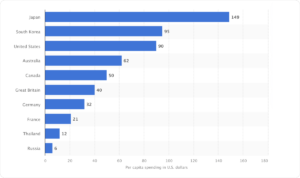
Leading markets worldwide based on mobile spending per capita, provided by Statista
However, it is important to approach App Store Optimization correctly in order to achieve the maximum impact. This article will focus on how to effectively optimize your app for the Japanese and South Korean markets, which have seen a rapid increase in active users and mobile app spending.
Optimizing for Success: Navigating the Unique Challenges of App Store Optimization in Japan
When it comes to App Store optimization, the first step is often keyword research. There are numerous articles on gathering keywords for your app that will assist you in doing so correctly. While this process may be relatively straightforward for languages such as English, it can be much more challenging for languages that are not as widely spoken or understood. This is particularly true for Japanese, which is known for its complexity and the use of multiple writing systems, including hiragana, katakana, kanji, and romaji.
For app developers and marketers, the challenge of optimizing for Japanese lies in the fact that there are multiple alphabets and writing systems in use, each with its own unique characteristics and nuances. This can make it difficult to accurately gauge keyword popularity and traffic, as a word written in one alphabet may be completely different from the same word written in another.
For example, the keyword “puzzle” in English may have several different variations in Japanese. In the Japan Google Play store, the keyword “パズル” (written in Katakana) is more popular and has higher estimated traffic than the keyword “ぱず” (written in Hiragana), even though the two words are pronounced the same in Japanese. This highlights the importance of understanding the different writing systems and alphabets used in Japanese when conducting keyword research, as well as the need to consider multiple variations of a given keyword.
Overall, optimizing for the Japanese market requires a more thorough and nuanced approach than for other languages and regions. App developers and ASO marketers should be prepared to invest the time and effort necessary to gain a deep understanding of the language and its various writing systems in order to maximize the impact of their optimization efforts.
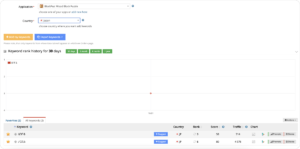
Example of search volume and estimated traffic for several ways to say “puzzle” in Japanese with the help of free ranks checker for keywords on keyapp.top platform
When optimizing your app for Japan, it is important to take into account the different types of writing used in the language. Japanese uses hiragana, katakana, hieroglyphs (kanji), and romaji (latin), making it one of the most difficult languages to learn. This can make keyword research challenging, as there may be multiple ways to write the same word in different alphabets. For example, the keyword “puzzle” may be written as “パズル” in Katakana or “ぱずる” in Hiragana, and while they are pronounced the same, they have different popularity scores and estimated traffic.
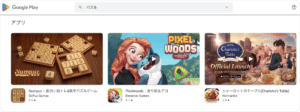
“ぱずる (puzzle)” written in Hiragana
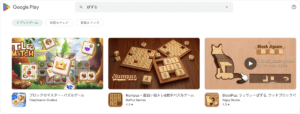
“パズル (puzzle)” written in Katakana
Additionally, the search list for keywords that are written differently but have the same meaning can vary. For example, searching for “puzzle” in Hiragana may yield a different list of results than searching for “puzzle” in Katakana. Therefore, it is important to include multiple variations of a word or phrase in your metadata to ensure your app is visible to Japanese users.
Japanese users typically use Hiragana when searching for apps on Google Play or the App Store, but it is still important to include both Hiragana and Katakana variants of keywords in your metadata. Overall, when optimizing your app for Japan, it is essential to consider the complexities of the language and be mindful of different variations of keywords to ensure your app is visible to Japanese users.
Japanese users typically use Hiragana when searching for apps on Google Play or the App Store, but it is still important to include both Hiragana and Katakana variants of keywords in your metadata.
1. Gather both the keywords in Hiragana and Katakana for Japan locale.
To optimize your app for the Japanese market, it is important to conduct keyword research in both Hiragana and Katakana. By gathering search requests in both scripts, you can ensure that you are covering all possible variations of a word and not missing any potential keywords. Additionally, the character limits for metadata fields in the App Store and Google Play for Japan are the same as in English, but you can use more keywords due to the compact nature of hieroglyphs and the lack of spaces between them, allowing you to use a higher number of search requests and increase your chances of being indexed. For example, the keyword “dating” takes 6 characters in English but only 2 in Japanese “日付” which saves space in the keyword field on the App Store.
2. Verify machine translations with the aid of English-Japanese dictionaries, as Google Translate often inaccurately translates into Japanese.
When translating words from your primary language to Japanese, the meaning may vary, and Google Translate often defaults to using Katakana instead of Hiragana, which is commonly preferred by organic users for searches on app stores. For instance, for the keyword “drifting” in English, Google Translate shows “ふわっと” in Katakana, while in Hiragana it is “漂流”.
3. Consider the Japanese chronology in your localization efforts.
When localizing your app for the Japanese market, it’s important to keep in mind that the Japanese use a different chronology system that is based on the eras of the emperor’s reign. While the standard chronology used in other countries is also understood by the Japanese, it’s best to take this cultural aspect into consideration for a more complete localization.
When localizing your app for the Japanese market, it’s important to keep in mind that the Japanese use a different chronology system that is based on the eras of the emperor’s reign.
4. Be mindful of the meaning of numbers.
In Japan, certain numbers have a specific meaning and are considered unlucky. These include 4 (associated with death), 9 (associated with suffering), and 13 (associated with failure). To avoid any potential negative impact on your app’s conversion rates, it’s important to avoid using these numbers in your text or visual optimization. Even small details like this can have a significant impact on the amount of organic traffic your app receives in Japan.

Here is a good example of the app icon, which, most probably, was created according to the Japanese beliefs in numbers; figures such as 4, 9, and 13 are avoided.
5. Tailor your visual optimization to Japanese trends.
When designing your app’s icon and screenshots, it’s common to aim for minimalism and include only essential details for users. However, in Japan, users tend to prefer having all the information they need in one place. This applies to app screenshots as well. Don’t be afraid to include detailed information and written descriptions in your screenshots, as minimalism may not be as well-received by Japanese users.
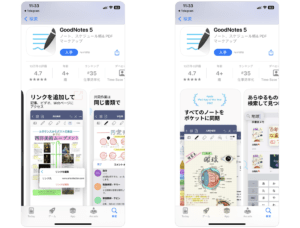
Examples of app screenshots for Japan localization
6. Use Japanese models in app screenshots.
When localizing your app screenshots for Japan, it is beneficial to use Japanese models. This makes the app more appealing to users and gives the impression that the app was specifically designed for the Japanese market. This concept applies to games as well, as incorporating manga characters can be particularly appealing to Japanese users of all ages. As an example, here’s the YourCam app, optimized for the US and localized for Japan.

Optimizing your app for the South Korean market
As one of the top-performing regions for app developers, South Korea is a valuable market to consider for localization. The official language of South Korea is the Seoul dialect, and it is important to note that the writing system used in the language is not hieroglyphic but a combination of letters forming syllables. To effectively optimize your app for the South Korean market, here are a few tips to keep in mind:
1. Use a mix of English and Korean keywords in your research.
Many Korean users understand English and may use English keywords when searching for apps. By including both English and Korean keywords in your research, you can gain a better understanding of the popularity of specific keywords and use them in your text metadata and promotion efforts.
2. Fully translate your app into Korean.
To attract organic users and receive positive ratings and reviews, it is important to translate not only your text metadata and app screenshots but also the entire app itself. Keep in mind that localization is not only about translation but also adapting your app to the needs of the Korean market.
Consider translating your app’s brand name. Many apps have English names that are widely recognized, but for localization in South Korea, it may be beneficial to translate your brand name as well. Companies like Tinder and Uber Eats have done this to effectively target the Korean market.
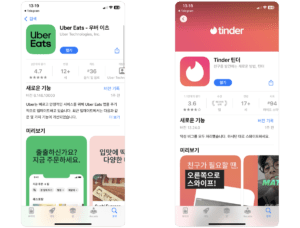
3. In screenshot optimization, use complex and anime-inspired designs rather than minimalist and realistic ones.
Koreans highly value images that have a Korean aesthetic. Localizing UIs and using Asian models in your creatives can make them more appealing to Korean users. In the case of games, using a cute manga and/or anime style called Aegyo that is popular in Korea, such as Kawaii in Japan, can make them more appealing to Korean users. Keep in mind the meaning of color as well, as some colors have positive meanings, such as white, green/blue, and yellow, while others have negative meanings, like black and red.
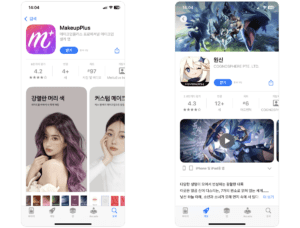
Examples of app visuals localized for Korea
4.Stay up to date with current trends in icon creation for your app in Korea.
In gaming applications, the trend is to show a popular hero on the icon. For non-gaming applications, the trend, like in China, is to use the brand name on the icon but not in its entirety, for example, by using only the first letter, like the local player NAVER with a simple letter N on the icon.

Keyword Promotion Case Study: Strategies and Results for Japan and Korea
As you can see, the Asian market for apps is quite different from the US or European market, and this is particularly evident in text and visual optimization, where different colors and trends are used to attract the maximum number of organic users.
To understand how to choose the right strategy for keyword app promotion in Japan and Korea, let’s examine some examples of keyword promotion that I did. For example, in Korea, Google Play was used to promote the keyword “퍼즐 게임” (puzzle game). The promotion began at rank 101. Within 7 days, 595 installs were used, starting with 70 installs on the first day and ending with 100 installs on the last day of the promotion. As a result, the app achieved rank 1 for the keyword.
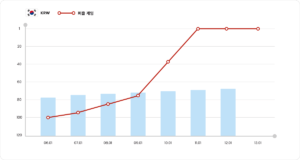
Next, let’s examine some examples of keyword promotion in Japan. The keyword I promoted is “ドリフトシミュレーター” (“drift simulator“). The promotion began with a rank of 125. I set the order for 3 days with 80 installs per day. As a result, I managed to achieve a top 5 ranking for the keyword within 2 days.
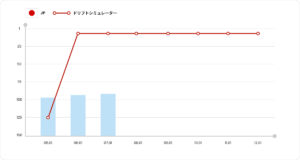
Summary
These examples demonstrate that with proper App Store Optimization in Asian countries, it is possible to achieve high rankings for keywords, even for popular search requests. When optimizing your app for the Asian market, it’s crucial to not only translate the metadata and app text, but also to localize the app to align with local trends.




